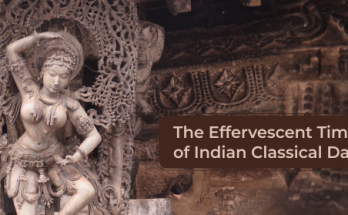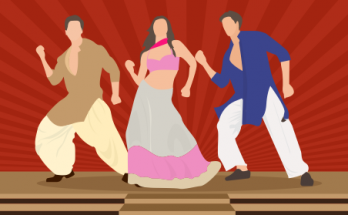The culture of a country is identified by a lot of aspects: Clothes, festivals, food, languages, traditions, art, etc. But perhaps the most important aspect is the dance forms that are borne out of these cultures.
Why is Dance the most important aspect? Because it is the most infectious aspect, the one that penetrates people’s minds the quickest. Indian Dance is the art form that makes a person spring into action, make even the stiffest person break lose. That and music, of course.
And when it comes to Indian Dance forms, there is no close contender to India.
India’s classical dance tradition dates back roughly to 500 BCE, which means it is one of the oldest dance traditions in the world. Naturally, it has evolved to the largest extent and is thus the most diverse too. This is evident from the fact that the dance forms that originate from the dance drama tradition of Tamil Nadu are more different than similar to that of Kerala, Tamil Nadu’s closest neighbour.
One can only imagine the kind of uniqueness and individuality manifest in dance forms of states far apart from each other.
Let’s look at some of the oldest and most refined dance forms that originate from Incredible India:
- Bharatnatyam:

Bharatnatyam is one of the oldest and perhaps the most complex Indian dance tradition. It is often said that the dance is so named as Bharat connotes ‘Bha’, from ‘Bhaava’ which means expression, ‘Ra’, or;’ Raga’, which means melody, ‘Ta’, or ‘Tala’ which means Rhythm. - Kathak

The Dance of northern India, particularly Uttar Pradesh, this dance form is so named because of its storytelling through movements and expressions. ‘Katha’ in Hindi means ‘story’, and ancient storytellers who performed it, who were essentially travelling bards, were called ‘Kathaks’. - Odissi

As the name suggests, Odissi dance form is a gift from the eastern states, one that is as ancient as Bharatnatyam. The defining feature of the Odissi dance is the Alakka (the round white coloured decorative head piece, which supports the teeka), as well as the extremely intricate hand gestures and bhangas (body bends) used to tell a story. - Kathakali

Kathakali is the most elaborate and dramatic dance form from Kerala, India, and is characterized by highly dramatic costumes, face masks and make-up, and mostly male dancers. Like all other traditional Indian dance forms, Kathakali also uses intricate hand gestures and footwork, but unlike them, they also integrate movements from ancient Indian martial arts from South India. - Kuchipudi
 Originating in the southern state of Andhra Pradesh, Kuchipudi is one of the most elaborative dance forms and contains a set of signs to express the story. The Indian dance forms involve an extensive style of footwork, in conjunction with hand signs (mudras), eye and face movements.
Originating in the southern state of Andhra Pradesh, Kuchipudi is one of the most elaborative dance forms and contains a set of signs to express the story. The Indian dance forms involve an extensive style of footwork, in conjunction with hand signs (mudras), eye and face movements. - Manipuri

Dressed in beautiful, bridal costumes with an intricately decorated barrel-like skirt (called Kumil), Manipuri dancers are usually known to illustrate the romances of Krishna and Radha, also known as Raasleela. Originating from Manipur, this dance features soft, sensuous movements by female dancers and fast movements by male dancers.The Dances of India are as varied as the shades of a rainbow, and yet feel similar, no matter which state we belong to. The stylized movements, the intricate footwork with the ghungroo, gold-bordered sarees and of course, the beautiful hand movements- the traditional dance forms may seem like an illustration of a story, but what they are actually is a history of one of the richest and diverse cultures in the world.








